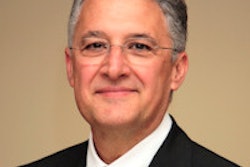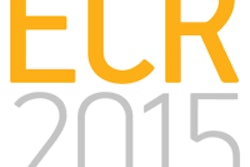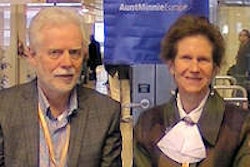While they do have some concerns over the use of teleradiology, French and Italian radiology residents generally have favorable views of the practice and believe teleradiology utilization will continue to increase, according to research presented at ECR 2015 in Vienna.
In a survey, 73% of French residents and 58% of Italian residents reported a positive attitude about teleradiology. Both groups of residents worried, however, about not having enough contact with clinicians, and in particular, insufficient clinician trust in using teleradiology, said presenter Dr. Nadya Pyatigorskaya of Pitié-Salpêtrière Hospital in Paris.
 Dr. Nadya Pyatigorskaya
Dr. Nadya PyatigorskayaTeleradiology is becoming more and more popular in Europe, and radiology residents and junior radiologists practice teleradiology in their daily activities, as well as on-call, in private practice, and in teleradiology societies, Pyatigorskaya said.
As a result, the researchers sought to assess French and Italian residents' practice of teleradiology, their awareness of the legal and practical framework for the practice of teleradiology, and their expectations and perspectives on teleradiology.
The Web-based survey was sent to Italian radiology residents (as part of an overall survey on teleradiologyfor Italian radiologists) as well as separately to French radiology residents. There were 120 Italian and 173 French respondents in this study. Of the French responders, 50% practiced teleradiology while 50% did not. Meanwhile, only 20% of Italian residents practiced teleradiology.
Teleradiology usage
The most frequent teleradiology use cases for French residents were for on-call purposes (50%), for external institutions (42%), and as part of the workflow of the institute (28%). Italian residents tended to utilize teleradiology differently; teleradiology performed as part of the workflow of the institute was the most popular (50%), followed by for second opinions (26%), for teaching or research (18%), and for external institutions (13%).
Top reasons for interest in teleradiology among French residents:
- Flexible working hours (49%)
- Comfort at work (46%)
- The possibility of working at home (46%)
- Use of modern technology (33%)
- Improve patient care (27%)
Top reasons for interest in teleradiology among Italian residents:
- Collaborative network (82%)
- Greater efficiency (61%)
- Distribution of the workload (53%)
- Communication with clinician (45%)
French residents varied quite a bit in where they read teleradiology studies; 34% read exams on a specific workstation and 30% reviewed studies on or a general workstation. That wasn't the case for Italian residents, however. Eighty percent of Italian residents read teleradiology exams on a general workstation.
In other findings, 64% of French residents had access to clinical data via RIS or dedicated platforms, compared with 75% of Italian residents. Twenty-six percent of French residents accessed clinical data via email or the phone, compared with 17% of Italian residents. No access was available for 10% of French residents and 8% of Italian residents, according to the researchers.
How French radiology residents communicate teleradiology exam reports:
- Using the institution's network (43%)
- Secure email (30%)
- Phone (14%)
- Standard email (7%)
- Fax (7%)
How Italian radiology residents communicate teleradiology exam reports:
- Using the institution's network (78%)
- Standard email (9%)
- Secure email (4%)
- Fax (4%)
- Phone (4%)
Favorable views
Residents of both countries tended to have a favorable opinion of teleradiology, with 73% of French residents and 58% of Italian residents reporting a positive attitude for the technology.
"They think [there will be] an increase in the usage of teleradiology in the future and in particular, they are excited about the efficiency it can bring," Pyatigorskaya said.
In France, teleradiology is seen as a good solution to the lack of radiologists in some regions and as a tool that can improve patient care, she said.
"It's also quite easy to have contact with the referring clinician using teleradiology," she said.
Italian radiology residents cited teleradiology benefits such as providing a collaborative network and division of workload, she said.
However, both countries expressed concern that there will be insufficient contact with clinicians and especially, insufficient clinician trust in using teleradiology, she said.
In France, residents also pointed to quality issues such as slow transmission and image quality concerns, as well as the multiplication of examinations, she said. For their part, Italian residents noted concerns such as insufficient contact with the radiographer and the patient, as well as not enough access to patient clinical data.
Current/potential threats
Residents identified a number of current threats from the use of teleradiology, including a lack of awareness about the legal framework of teleradiology practice, inclusion of patient information on images being interpreted by teleradiology, and concern about imaging protocols, according to the researchers.
Future threats from teleradiology cited by survey respondents include income instability and decreased quality, Pyatigorskaya said. Italian residents feared losing control of their work, while French residents were concerned over potential worsening in the clinical aspect of their work.
Pyatigorskaya noted there is a real need for theoretical training on teleradiology to improve radiology resident understanding of the legal and global technical framework of teleradiology practice.



















